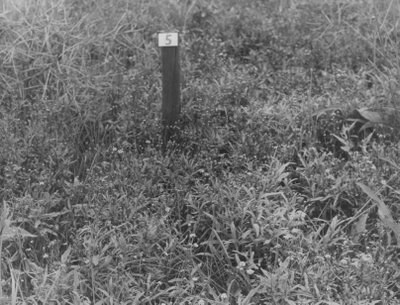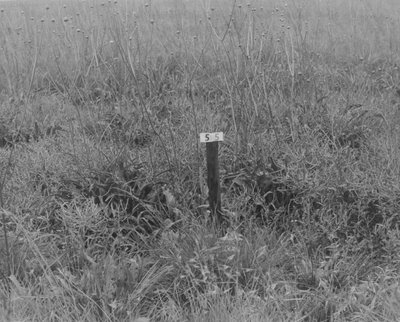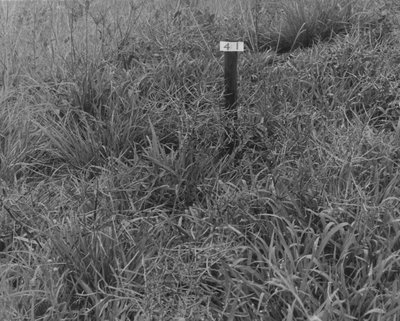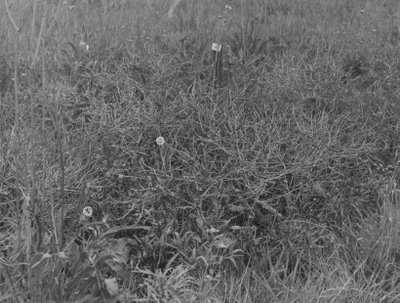Ecology of my Pond

The pond was originally dug c1860 by the second occupier of the property to provide
water for the horses. In recent years a ten inch pipeline was put in place to take the flood water which had previously spilled over into a furrow , Being too small to take the floods it overflowed and flooded around the house,, Unfortunately the pipe line became damaged and consequently when we arrived were were regularly flooded. Last year I fixed the pipeline and have made it so the dam now fills almost to the brim during the winter.

Over the past summer the pond is building up a sort of ecosystem. Its difficult to call it an ecosystem, or is just a collection of opportunists and some that have actually been put there?.A species of introduced frog has has started breeding and I counted about ten. Couldn't get close enough to make a real identification but I am sure they were the Green and Golden Bell Frog Litoria aurea from Australia where the numbers are decreasing but seem to be well established in New Zealand.There are three introduced species in NZ. The other at the top is the Southern Bell Frog Lotoria raniformis.
 Two paradise ducks have now found the pond but only visit it in the mornings and take off in fright as soon as I approach.This duck is unique to New Zealand and has increased rapidly since the forests and bush were destroyed making way for pasture. The female with is white head and bronze colouring is more attractive than the male.Also known as NZ Shelduck Tadorna variegata but perhaps more a goose than a duck
Two paradise ducks have now found the pond but only visit it in the mornings and take off in fright as soon as I approach.This duck is unique to New Zealand and has increased rapidly since the forests and bush were destroyed making way for pasture. The female with is white head and bronze colouring is more attractive than the male.Also known as NZ Shelduck Tadorna variegata but perhaps more a goose than a duck Another visitor is the New Zealand fantail, a delightful little bird about the size of a sparrow but far more sexy. It appears not to be afraid of humans as it will settle just a few feet away on a branch and do a little pirouette before darting off over the water to catch a little gnat.
Another visitor is the New Zealand fantail, a delightful little bird about the size of a sparrow but far more sexy. It appears not to be afraid of humans as it will settle just a few feet away on a branch and do a little pirouette before darting off over the water to catch a little gnat.
Well its midwinter now and there is ice on the pond in the mornings. Its too cold for my little friends and the frogs have hibernated. They will only come out when the water warms up and I'm not sure when that will be. After the pond first filled up the duck weed took over and covered the whole water surface, but with the help of the stormwater much was washed out and I have interfered and taken out a bit more.

Maybe if if I put in some plant eating fish the problem will be sorted out.Each plantlet disc of this particular species Lemna minor has only one root which is several cms long.
The patches of green duckweed can be seen clearly on the dam surface (top Picture)

Each plantlet is made up of three or four disc and each disc is made up of small compartments of air or bags of air enabling it to float. This picture is about life size. It is amongst the smallest flowering plants in existance. Another species present and associated with the duckweed is Azolla filiculoides(below) This tiny plant is actually made up of two living symbiotically together, each benefitting the other.The arrangement is not reversable as neither can live without the other.
The two are the tiny aquatic water fern and a filimentous blue green algae which aids the photosynthetic process and the production of energy for the fern but more importantly the fixation of nitrogen. . Another species in New Zealand is Azolla pinnata and this can be distinguished by its feathery root.This one is not present in the pond.
Another species in New Zealand is Azolla pinnata and this can be distinguished by its feathery root.This one is not present in the pond.
Spirogyra is now forming on the sides of the pond.We used to learn about it in junior school biology.So here is a picture of it close up. I managed to photograph it with the aid of my microscope and digital camera.I'm quite surprised it worked.










